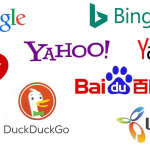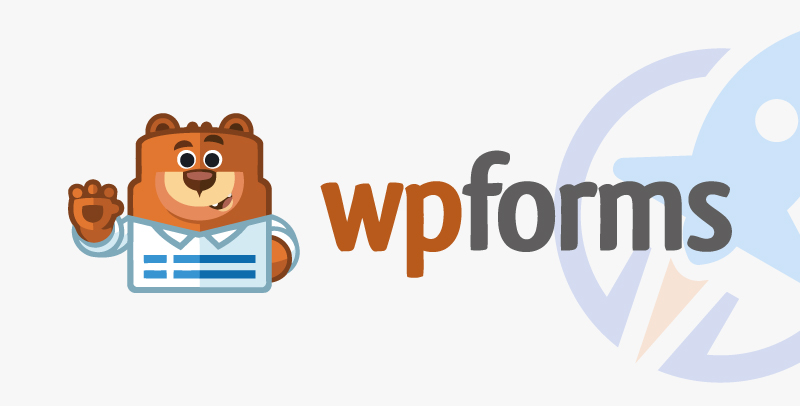Your customer data is the key to understanding your customers better so you can improve your marketing, sales, customer experience, and more. However, when your data is scattered across various platforms, you can’t harness its full potential. That’s where a single customer view, or SCV, comes in.
An SCV consolidates your scattered customer data into one location so you can better understand your customers and use your data in meaningful ways.
Want to learn more? In this guide, we’ll explore what SCV is, its benefits, and how to implement it.
Looking for an easy-to-use CRM with all the features you need to boost sales?
Nutshell has what you’re looking for.

What is a single customer view?
A single customer view (SCV), also called a unified customer view or 360-degree customer view, is a centralized location for data on a specific customer that gives you a holistic view of all of the data you have related to that customer. An SCV aggregates data from multiple sources, such as marketing platforms, sales interactions, support tickets, and more. Having a unified customer view enables you to understand your customers better, keep track of all customer interactions, and keep your team on the same page.
The benefits of implementing SCV
Understanding your customers is crucial to business success and affects sales, marketing, customer support, and beyond. Creating a 360-degree view of your customers offers many benefits, such as:
- Team-wide access to data: SCV gathers all your customer info into one accessible hub, making teamwork a breeze. It’s like having a shared digital whiteboard where everyone can contribute and keep track of what’s going on, fostering collaboration and alignment across departments. A unified customer view also ensures everyone can access the same data, keeping your team on the same page.
- Cleaner data: SCV streamlines your data by eliminating duplicates and rectifying errors. With a cleaner dataset, you can navigate through information more efficiently, and with accurate and reliable information, you can be confident in your data-driven decision-making.
- Enhanced understanding of customers: SCV offers a comprehensive overview of each customer’s preferences and behaviors. This improved understanding allows businesses to tailor their offerings and communications, enhancing customer satisfaction and fostering long-term loyalty.
- Improved customer experience and loyalty: SCV enables businesses to deliver personalized interactions and targeted messages tailored to individual preferences. This personalized approach improves the customer experience, cultivating stronger bonds and driving customer loyalty over time.
- Better segmentation and personalization of marketing efforts: SCV enables more granular segmentation of customers based on various attributes and behaviors. When you tailor your marketing to specific audience segments, you can personalize your marketing and provide each segment with more relevant content and offers, maximizing engagement and conversion rates.
- Enabling cross-channel marketing: SCV integrates data from multiple channels, providing customers with a seamless and consistent experience across various touchpoints. Whether customers engage with the brand through emails, social media, or in-store visits, businesses can maintain continuity in their communications, enhancing the overall customer journey and brand experience.
Types of customer data in a unified customer view
The types of data you include in a unified customer view vary from business to business. It may differ depending on the data you have access to, which data matters to your business, and other factors. You can include any information that’s relevant to your customers and your business, but some common data types include:
- Contact information
- Demographic data
- Firmographic data
- Behavioral data
- Marketing channel interactions
- Sales representative interactions
- Support tickets
How to create a single customer view
How do you go about creating a single customer view? To get started, follow the key steps below.
Make a record of your data sources and their owners
Before diving into SCV creation, taking stock of your data sources and who’s in charge of them is essential. Make a list of all your customer data sources, like CRM systems and marketing platforms, and assign someone to oversee each one. This ensures everyone knows who’s responsible for what, creating accountability and streamlining your data management.
Choose a platform to use as a unified customer data source
Picking the right platform for your SCV is crucial. Many businesses use a customer relationship management (CRM) system to unify their customer data. Companies with higher volumes of data may also opt for a dedicated customer data platform (CDP).
Whichever type of platform you choose, look for a solution that can integrate with your existing tools, and keep an eye out for features like data cleaning, duplicate merging, and data enrichment.

Clean and standardize your data
Before bringing your data into the SCV platform, take some time to clean it up. Get rid of duplicates, fix errors, and make sure everything’s in the same format. Your SCV platform might also have tools to help, enabling you to clean your data as you import it and make the whole process much smoother.
Integrate your data sources
Once your data is cleaned and standardized, it’s time to bring it all together. Import data from different channels and integrate your SCV platform with your data sources to centralize your customer information. By consolidating all your data sources, you’re laying the groundwork for a complete picture of your customers.
Get your team up to speed
Implementing SCV successfully means getting everyone on the same page. Set up data governance guidelines that describe how data should be handled and appoint data owners for each channel. Then, provide team training to ensure everyone knows how to use the SCV platform.
Implement SCV into your processes
Once you’ve created your SCV, start thinking about how to use its insights and integrate them into your processes. There are many ways to use SCVs, and you’ll discover more as you continue working with your customer data. Some examples include:
- Creating personalized marketing campaigns
- Provide sales representatives with more detailed lead data
- Referencing past support requests to provide better customer service
Track your progress
Keep an eye on how SCV is impacting your business by tracking key metrics like customer satisfaction, deal win rate, and other metrics that are relevant to your business. Compare your performance before and after SCV implementation to see how things have improved. By staying on top of your progress, you can make adjustments as needed and maximize the benefits of having a 360-degree customer view.
Common challenges when creating an SCV
Building unified views of customer data can be challenging, and businesses often face certain obstacles. Below, we’ll discuss some of the most common challenges and how to overcome them.
Data silos
Data fragmentation across different systems can hinder collaboration and accessibility. Legacy tools and disjointed systems exacerbate this issue, making data integration a daunting task. To address this challenge:
- Choose the right tools: Invest in modern platforms with robust integration capabilities to unify your data sources seamlessly.
- Seek expert assistance: Collaborate with professionals to navigate integration complexities and streamline the process for optimal efficiency.
Poor data quality
If your data isn’t accurate and consistent, you can’t trust the insights you get from it or reliably use it to inform your decision-making. That’s why taking steps to improve data quality is so important. Methods for improving data quality include:
- Prioritize data cleaning: Conduct thorough data cleansing to eliminate duplicates, rectify errors, and standardize formats before data integration.
- Establish data governance standards: Develop clear guidelines and protocols to govern data collection, maintenance, and quality assurance practices.
- Validate data sources: Verify the reliability and accuracy of your data sources and implement measures to uphold data quality standards.
Compliance and privacy concerns
In today’s world, protecting customer data is more critical than ever. Regulations like GDPR and CCPA are there to make sure businesses play by the rules. The following tips will help you stay on the right side of the law and ensure you’re protecting your customers’ privacy:
- Stay informed: Stay up to date on the rules and regulations that apply to your business and the data you collect.
- Set some guidelines: Lay out clear policies and procedures to ensure you comply with all relevant regulations and respect your customers’ privacy.
How Nutshell can help you create a single customer view
Creating a single customer view gives businesses a powerful tool to gain insights into their customers’ behaviors, preferences, and interactions. By consolidating data and creating unified customer profiles, you can enhance customer understanding and engagement, driving growth and improving customer relationships for your business.
If you’re looking for an easy-to-use CRM to help you unify your customer data, consider Nutshell. With Nutshell, you can see all your customer data—from contact information to past interactions across marketing, sales and support—in one place. Plus, your whole team can access that data, making collaboration seamless. Nutshell also offers numerous integrations, friendly customer support, advanced sales automation and more.
To learn more about how Nutshell can help you unify your data and improve your customer relationships, start a free 14-day trial or sign up for a demo today.
See Nutshell in action
Give our powerful, easy-to-use CRM a try for free for 14 days! Or join a live demo to see Nutshell at work!

The post Unlocking the Power of Single Customer Views (SCV) appeared first on Nutshell.













